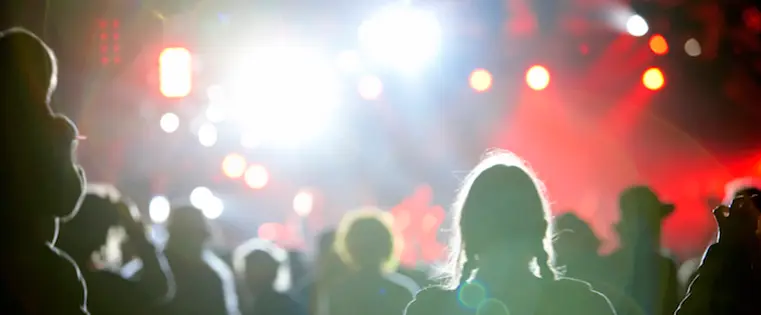While it may not be realistic for your brand to take over a town, the concepts behind the campaign are relevant to any event. No matter the size, your top priorities should be ensuring attendees fall within your company’s target market and the size and scale are aligned with your goals.
After all, events aren’t just about attendance — they’re about engagement. Dust off your traditional event tactics with these tips:
1) Update Your Pre-Event Marketing
You can’t rely on email because it will likely only reach 20 percent of your intended audience. But email isn’t the enemy; it just needs some friends. The key to standing out in the crowd is 1:1 messaging. A data-driven, personalized content marketing strategy that spans across channels is more likely to attract and engage potential attendees.
Dabble in retargeting. If someone visits your site but doesn’t sign up for your event, use a tool like AdRoll to follow her around with compelling messaging while she’s still in the decision-making process.
Native advertising on social media sites like Facebook, Twitter, and LinkedIn is another cost-effective option. Develop an event website like Dell World, and create an event hashtag.
It’s important to allow attendees to talk about your event. Connecting with your audience on social channels prior to the event will result in deeper engagement at the event.
2) Do Away With the Paper Trail
Gone are the days of brochures and business cards. It’s time to embrace LinkedIn connections and online agendas. Have printed handouts on hand for those who prefer them, but make it easy for attendees to access their schedules from their phone or tablet via an app to ensure they can easily engage with you during the event, as well as pre- and post-event.
Another option is to give attendees access to a printer-friendly version of the agenda that they can print on their own. Not only are you achieving cost savings, but you’re also reducing environmental waste.
3) Embrace Pre-Event Networking
We used to attend conferences and events with the hope of meeting a great contact. Now the majority of that valuable networking happens prior to an event.
LinkedIn groups often form prior to an event, and attendees are able to form relationships before ever meeting in person. Natural Products Expo has a strong LinkedIn group with nearly 15,000 members. Having those pre-existing relationships makes events more efficient, not to mention more valuable. Eventbrite is another great option to gain engagement and confirmed attendees for events. It sends out reminders to your attendees and allows them to share the event on Facebook.
4) Get Creative With Capturing
One of the most popular and successful ways to record an event and gain a larger audience is live tweeting.
Assign a hashtag to your event, and market it on any materials or advertisements you release before and at the event. Reminding attendees of the hashtag at the event makes it easier for them to share news with their networks. Name an official “live tweeter” to tweet the conversations surrounding your event and engage with attendees who are tweeting about it. ExactTarget did this really well at this year’s Connections conference.
We recently engaged in live tweeting at EXHIBITOR, and it worked extremely well. My social media coordinator sat at the event for four days and continuously tweeted and updated Facebook. She was in the middle of the action, so people who couldn’t attend felt like they were in the middle of it, too. It made for much more authentic social media, and we had one of the highest scores for influencers using #EX14.
Live events are a critical piece of the marketing mix, and they’re much more attractive once they receive a digital facelift. And with Millennials slowly making up the majority of consumers, the days of lecture series are over. Experiential marketing is all about creating a unique experience that appeals to the attendees’ emotions and senses. It’s up to you to find the right fit for your brand and to choose relevant, timely tactics to attract and engage your audience.

